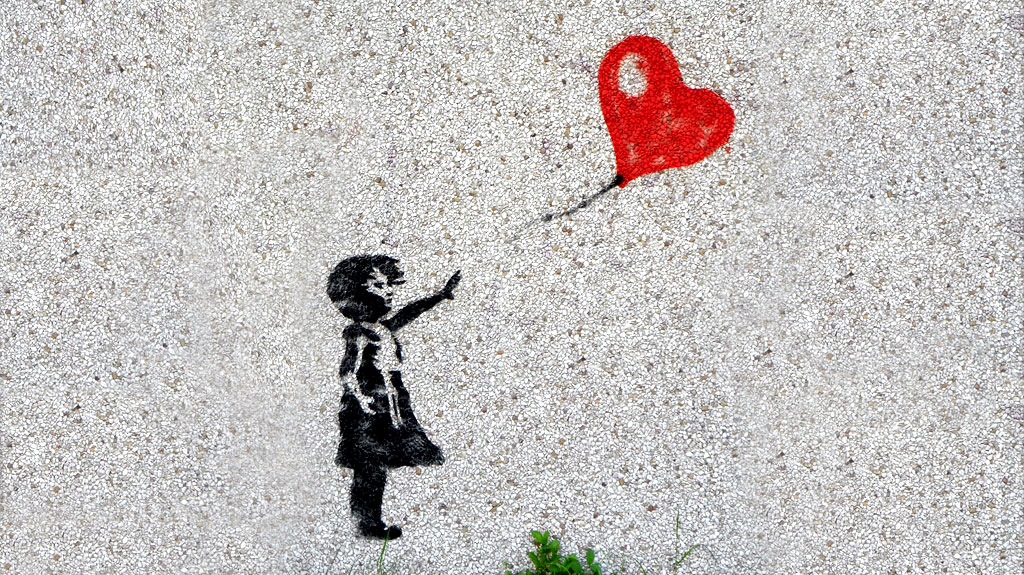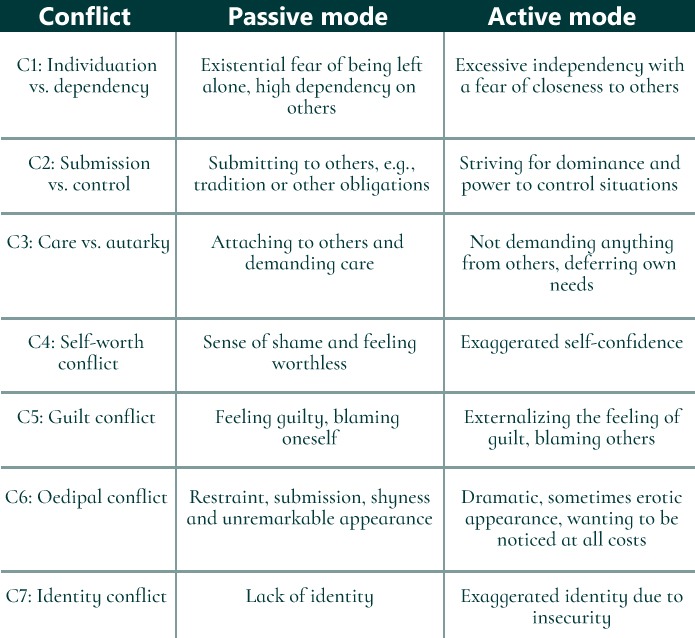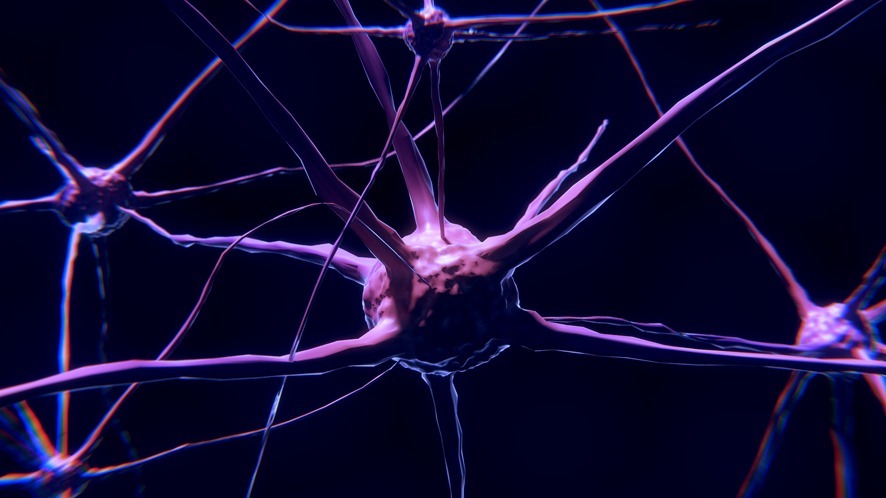Overview
Introduction | Why that series?
“The moment you recognize a pattern, you can make the powerful decision to step out of it.”
This article is the basic article in a series of articles on the eight common conflicts in an empathic-narcissistic dynamic and the two different coping modes (active/passive). In terms of content, we are moving here in a world of terminology. These are necessary for description, even if they are very oriented to the mind. But the mind also needs something to think about ;-). So let´s give it direction!
You can apply the following information to any form of narcissistic/co-narcissistic or even a dual soul relationship. They reflect two sides of the same coin.
You may have already learned about many theories, ideas, and concepts. Dual souls, narcissism, empathy, addiction. Concepts can give you a sense of security, a form of support, orientation. But every concept also creates limitations, walls and generalizations. If you get too attached to it, evaluations and judgments may arise within you that limit your view of yourself and the world.
You will find real answers to your questions beyond all concepts only in one place: in your heart. No one can dictate your inner, individual truth.
What I am doing is about offering helpful information for you to reflect upon.
Because all theories agree on one thing: That it is always about you, your love for yourself, your authentic being, your growth towards yourself.
Everything is cyclical and in motion: Nature prepares, grows, blooms, fades, rests. Each phase has its very own time. You as a human being are also in preparation, in growth, flourishing, letting go, resting. You are constantly moving and changing. Even though it may not always feel that way.
Change always happens now. And always with ourselves. We cannot change the past and other people. But we can try to understand. What actually happens (has happened) and why. We can try to find and pick up our growth impulse in this soup of experience.
Us humans have difficulties with acceptance of transience. Because it is painful to let go of a notion, idea or even a person. Perhaps we lack the confidence that the phase of passing will again be followed by preparation, growth and blossoming. When something passes away, it hurts. We don’t want the pain. But perhaps we have also stored the meaning of pain incorrectly?
Why were some of your experiences so painful? What have you done to deserve this pain? Why did you of all people have to go through such an experience?
Have you ever asked yourself such questions?
A question for you: What if pain only shows, that something old has become too tight for you? That you have outgrown an experience that may have been important to you – but no longer serves you?
What if pain was a signal that change is needed to continue to grow? That your soul reached a limit? Are you familiar with the term growing pains?
Pain hurts because it wakes you up. To feel, become aware, and face a choice: to use this pain for pointing the finger at life or other people, to blame something or someone for this pain – or – to utilize pain as motivation to find out, what your soul wants to tell you with this pain.
The empathic-narcissistic dynamics can provide valuable impulses for conscious self-reflection. It remains a concept that may help you locate the issues within you:
This article and my work is an offer, a part of my truth that I want to bring to the world.
Check for yourself, what information serves you to allow your growth happen more consciously. I can’t know what serves you. This is part of your individuality and decision.
With this series I would like to address this exact point. It is designed to give you the opportunity to recognize experiences with the narcissistic counterpart and understand them. On the other hand, I´m pointing out a pathway to achieve real protection, which originates from – love for yourself (your energy remains with you!).
How to distance yourself from a narcissistic person and stay focused on yourself? How to protect from having such an experience again?
A desperate and angry attempt to protect oneself is blaming the narcissistic person and demonizing them. This further drains energy from you. It weakens and traps you in a destructive, energetic cycle.
If you persist focusing on your counterpart, you miss the growth impulses, the possible messages of your soul .
From my perspective, the only effective protection is to reprogram the energetic pattern within you that kept you in toxic relationships, attracted corresponding partners, and maintained such dynamics. Your authentic self is your protection.
It takes courage to search for answers within. It demands your recognition, understanding, and your decisions. Thus, you change that very energetic blueprint within you: by dissolving the belief of lack, old beliefs and integrating feelings, facets, and longings that have since eked out their existence in the shadow of your inner universe.
This is not about blaming, improving yourself – just to take responsibility for another person’s misfortune. It is not about self-optimization but about clarity – toward self-acceptance, loving self-responsibility, and self-compassion.
Empathic-Narcissistic Magnetism | Similiraty (Common Conflicts) & Differences (Modes)
In relationships between narcissistic and empathic people, a strong magnetic dynamic often exists. This connection is influenced by an energetic signature that attracts a corresponding partner, creating cycles that trap both in recurring negative patterns.
Why does this happen? Is there a solution, a way out of the empathic-narcissistic relationship dynamics?
You may feel stuck, knowing the relationship is damaging yet unable to leave. This “stickiness” comes from both – shared conflicts and opposing traits.
Similarities and differences both fuel attraction. In empathic-narcissistic relationships, it’s about a core similarity and a core difference between partners, which makes the bond feel inescapable.
The Core Similarity: The same basic conflicts.
The Core Difference: Two opposite coping modes in dealing with these conflicts.
Here’s a brief outline of essential terms and the eight basic conflicts, as defined by psychoanalytic theory in the OPD conflict axis (Operationalized Psychodynamic Diagnostics).
Collusion | conflict, coping modes & consequences.
We now delve deeper and explore the nature of a collusion, the underlying conflicts, coping modes, and the effects that such a constellation can have.
1. what is collusion?
According to Jürg Willi (1975), in a so-called collusion, two (or more) people come together around the same basic (or core) conflict. This bond helps them avoid the fears tied to their conflicts and satisfy unconscious childhood needs. Much of this process is unconscious.
Metaphorically, two people dance around the same issue, happy that the other does not touch the shared wound, creating a strong connection. Usually, both partners have a similar conflict but try to resolve it with different coping modes. One partner deals with the conflict actively, while the other takes a passive approach. The similarity creates a strong, almost indescribable attraction, as each partner is drawn to the other´s differences in dealing with it.
The other person’s opposite coping mode complements one’s own. Like positive and negative charges, they combine to create a feeling of balance, harmony, and wholeness that none of them feels within themselves. Although it feels as if burdens, fears and conflicts are resolved, in reality, they are not.
Over time, the other’s different approach shifts from being attractive to feeling threatening. Each partner’s way of coping pulls the other toward the fears they initially tried to hide from. Primal fears and repressed conflicts begin to surface, creating tension, frustration, and even panic in the relationship.
This can be an opportunity to look inward, fostering self-reflection and growth. However, fears and emotional entanglements often make this hard. Instead, each partner focuses on the other, while their own inner conflicts remain unconscious. Rather than resolving & integrating issues within, they try to fight them outwardly through blame, accusations, and escalating arguments.
2. what is a basic conflict?
A basic (or core) conflict, in the context of this series and from a psychodynamic perspective, is present when a person feels an inner contradiction between values, goals, desires, and needs.
Conflicts are basically normal and part of everyday life. Everyone has conflicts within. Psychodynamic basic conflicts, however, relate to old, unresolved childhood issues, not to current, everyday conflicts (though they may often appear in daily life).
The issue arises when these internal conflicts and contradictions remain unconscious and there are no effective strategies to handle them, leading to a sense of inflexibility. This creates a conflict tension. This tension can provoke fear since it may challenge our self-image (“this is who I am”). We may wonder: are we really the person we believed ourselves to be?
Conflicting feelings, needs, or desires that don’t align with our constructed self-image can be unsettling. The more strongly we are identified with this image, the more these contradictions can unsettle us and, yes, even cause fear. To ease this tension and reduce anxiety, we tend to use defense mechanisms to some extent.
Now, let’s explore this further with an example conflict.
3. active and passive mode | example individuation vs. dependency
4. effects of unconscious collusion
This example illustrates the dynamics of how active and passive modes play out and how each partner’s core conflict can come to the surface. In this example, the passive mode is detailed more for Stefanie’s case, though Viktor’s active mode also follows a pattern. For him, Stefanie’s dependency creates fear. He too has an unconscious longing for a healthy integration of dependency, yet this longing is fearful and conflicts with his self-image. Neither of them finds balance within themselves because they cannot consciously integrate the other side.
In an unconscious collusion, both partners prevent a necessary, conscious processing of their inner conflicts by maintaining a complementary dynamic.
Put simply: Viktor’s (unconscious) need for dependency and attention is externalized onto Stefanie. This triggers fear in him, but also a sense of balance, helping him avoid his conflict. Similarly, Stefanie’s (unconscious) need for individuation is personified in Viktor and also triggers fear. She feels she needs him, thus achieving a sense of balance while avoiding her conflict. Both experience the illusion of completeness through their partner (a magnetic attraction and sense of familiarity), which allows them to avoid confronting, integrating, and resolving their inner conflicts.
Arguments occur at the interpersonal level, where each partner fights in the other what they haven’t integrated within themselves. This marks the beginning of the empathic-narcissistic drama cycle. Note: This isn’t about blame! The concept of guilt doesn’t apply in the framework from which these articles originate. It’s about awareness.
Overview: 7 (8) Core conflicts according to OPD
OPD means Operationalized Psychodynamic Diagnostic. In this introductory article, you have already learned a lot of complex information about the magnetism of empathic-narcissistic dynamics, the assumed underlying conflicts, and coping modes.
Before I conclude this introductory article, I would like to give you a brief overview of the eight core conflicts (according to OPD, seven):
Image adopted from Researchgate
You can read the corresponding articles for the conflicts on this site, just by clicking them:
1. individuation vs. dependence
2. submission vs. control
3. care vs. autarky
4. self-worth conflict
5. guilt conflict
6. oedipal conflict
7. identity conflict
8. averted perception of conflict and feelings
The other articles in this series explore each individual conflict (click on the items in the list).
The assignments I make therein (empathic/narcissistic) to the respective modes are based on model conceptions that have emerged from a combination of existing theoretical concepts, professional, and personal experience.
In the articles on empathic and narcissistic wounds, you can read in more detail what I am referring to.
You’ll also find here a simplified and practical approach for understanding empathic-narcissistic dynamics.
These insights can be used for self-reflection, even if you don’t identify as highly sensitive or empathic (co-narcissistic traits).
Namasté and all the love,
Your Kristina









